Barbecues at a Luxury Spa
Culture no longer develops vertically. Instead, it spreads like a subterraneous rhizome, growing into, mutating, uprooting, and, in the best-case scenario, nurturing that which it comes into contact with.
In this context, where a business is rarely single-faceted or as simple as it may have once been, capital, too, occupies everything. Industry categories dissolve as a never-ending cycle of collaborations invisibly and instantaneously shuffle money between the hands of fashion houses, galleries, artists, talent, PR firms, and other involved parties.
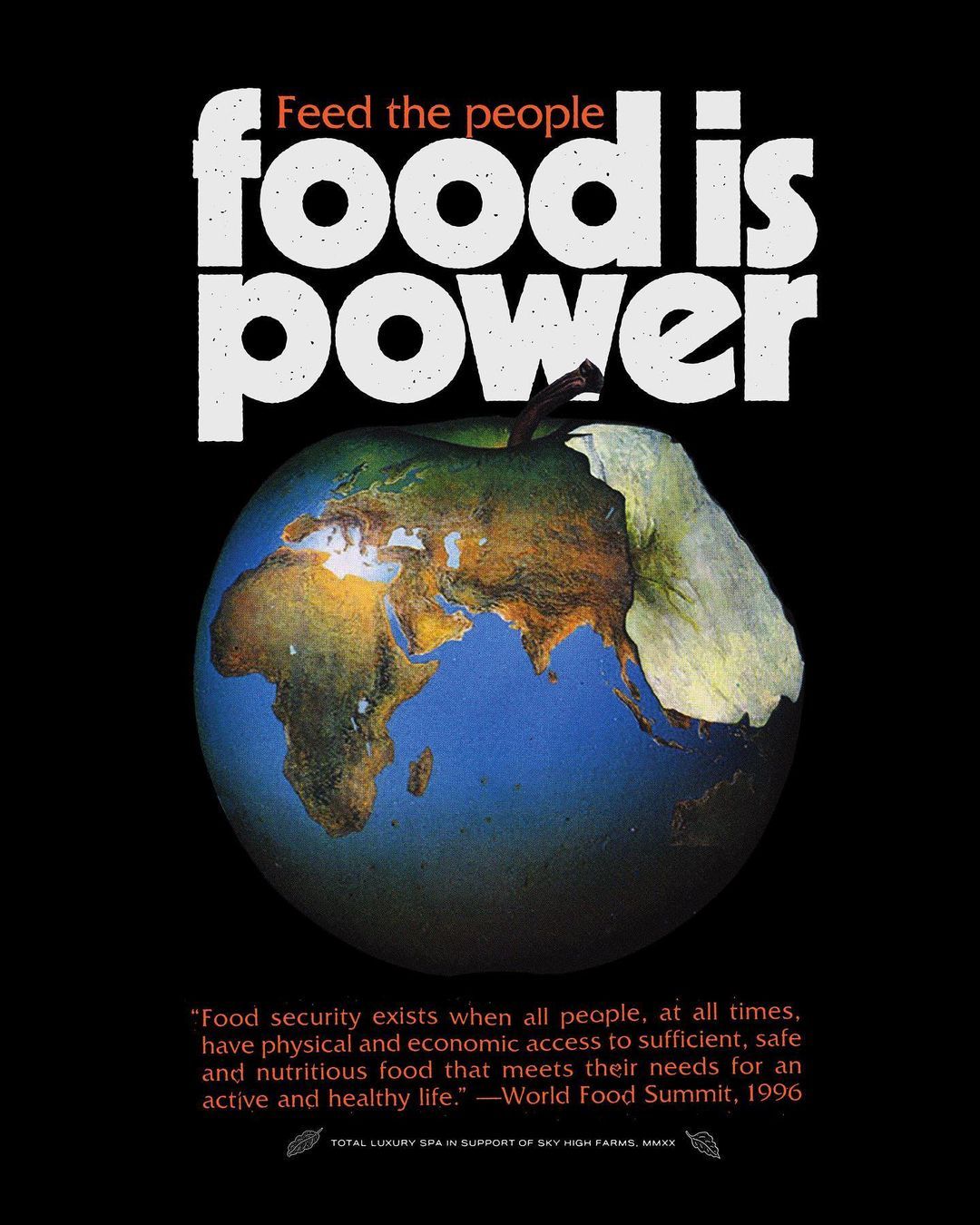
Sky High Farm x Dover Street Market x Total Luxury Spa, 2020
For Daniel DeSure, owner of the LA brand Total Luxury Spa, this element of contemporary culture is crucial to his business and design practice. “Capitalism is in everything, so a world in which we ignore that is wild to me,” he says during our conversation. Originally founded as a small artist zine imprint in South LA by DeSure, Total Luxury Spa has expanded to become a hybrid entity spanning fashion, arts and music programming, and community-based engagement. Closely tied to DeSure’s creative agency Commonwealth Projects, Total Luxury Spa is perhaps best known for their clothing collaborations with artists including Martine Syms, Cyprien Gaillard, Cauleen Smith, Lauren Halsey, Kelsey Lu, and Mario Ayala. However, the brand is also equally committed to what’s happening in their physical (and algorithmic) backyard, having worked with their down-the-street neighbors, Lopez Flowers, and the fashion-y Hudson Valley non-profit Sky High Farms.
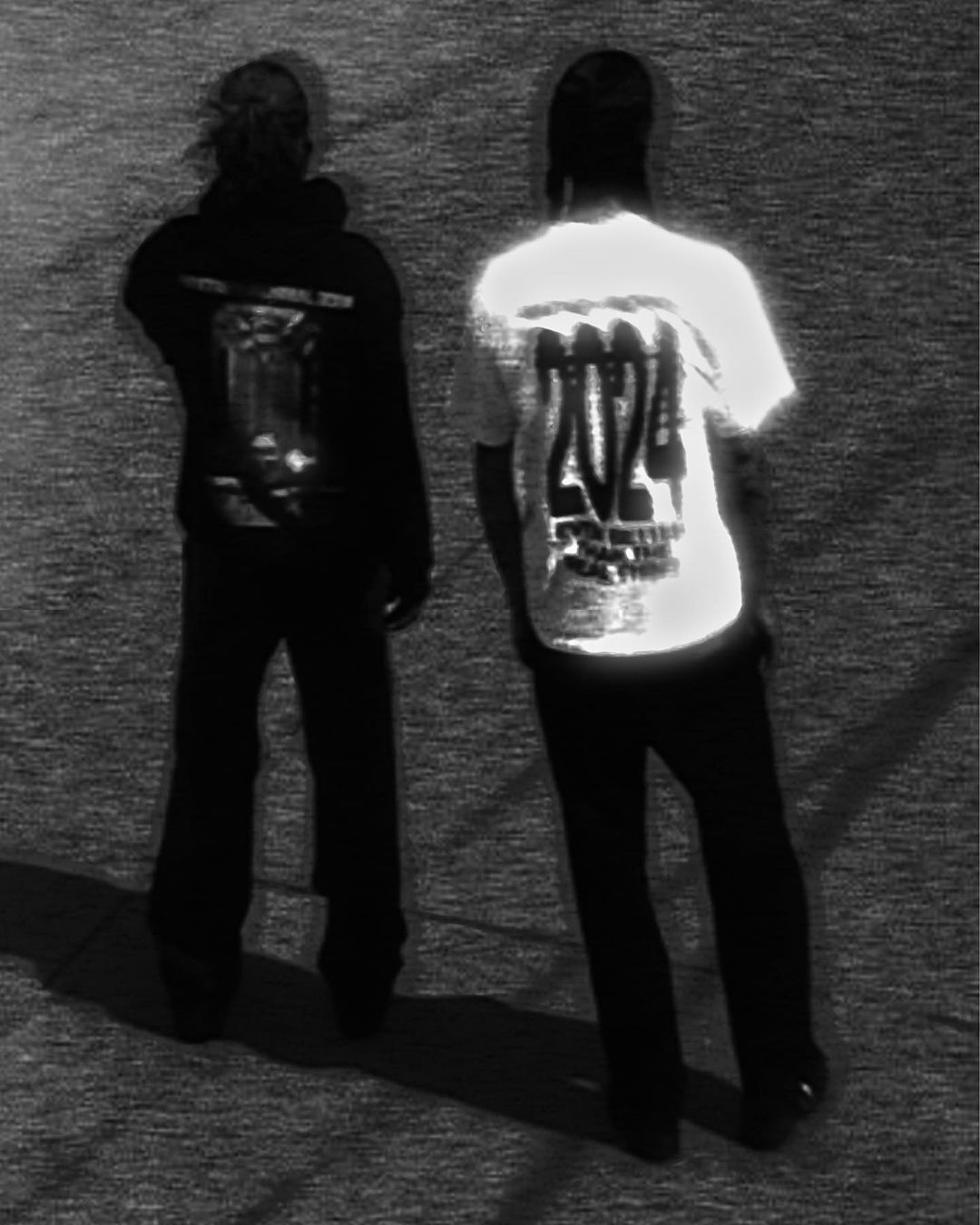
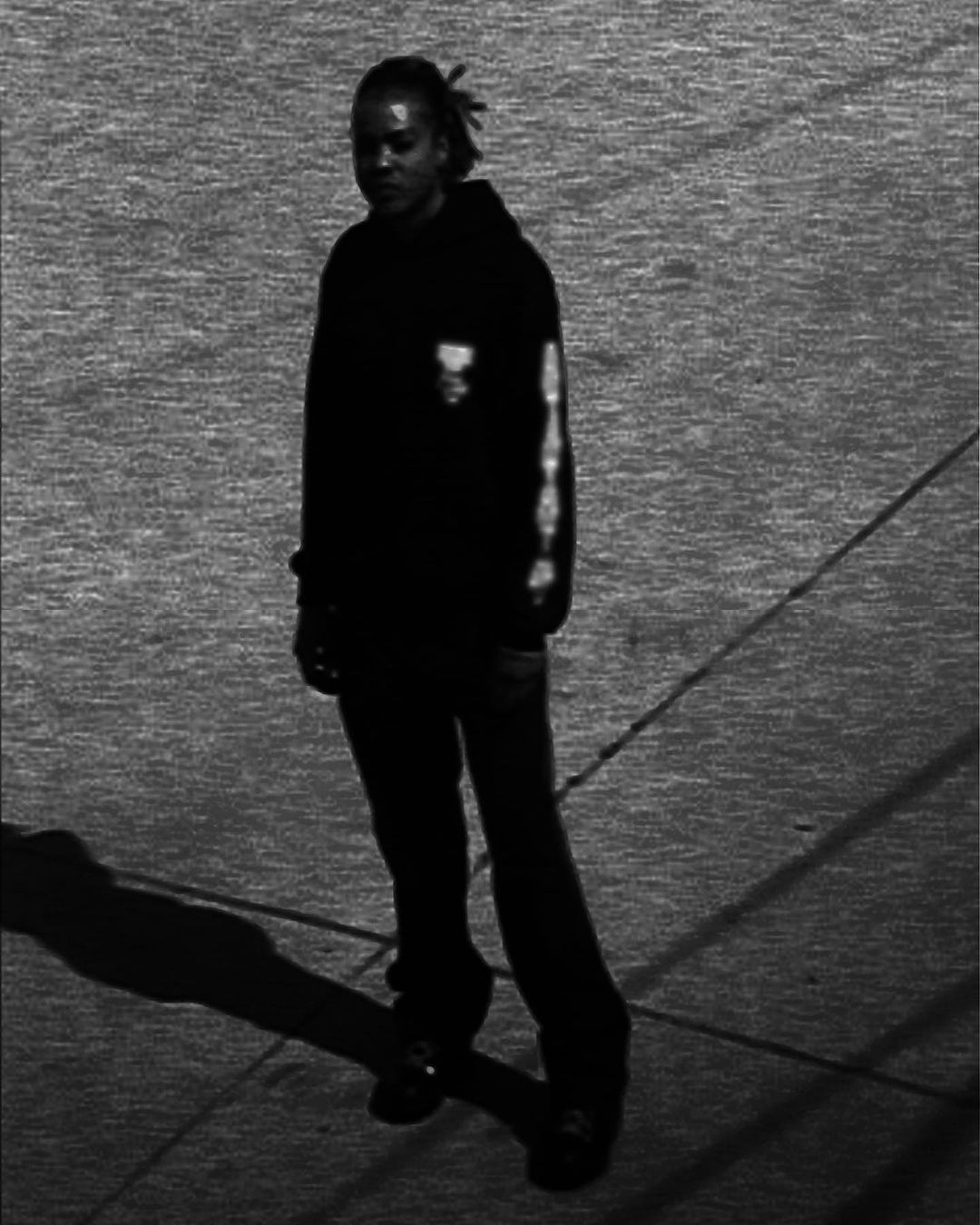
Whitney Biennial x Total Luxury Spa "Even Better Than The Real Thing," 2024
We're publishing an interview that Phillip Pyle conducted with Daniel DeSure earlier this spring. The two met by the hotel pool at the Hollywood Roosevelt during the Felix Art Fair—where Total Luxury Spa presented both old and new artist collaborations inside a Dover Street Market pop-up—and discussed the importance of trust, balancing commercialization and community-based work, and how DeSure’s background in film informs his narrative approach to design.
PHILLIP PYLE: Has your work become any easier now that fashion and art are more entwined?
DANIEL DESURE: Maybe it’s easier. I think everything is so accessible now that people are more open to doing wild shit. In the early or mid-2000s, there was a real separation between fine art and fashion. I also remember a specific time when all of the sudden all the fashion houses wanted to do art exhibitions and art books. There was a big wave. I remember thinking: “Is everything going to turn into this?”
I think people are more open to doing a lot of things, but the counter to that is that things have become homogenous. Everything starts feeling like everything else, in and around culture, which is something, internally, that I feel sensitive to in the studio [Commonwealth Projects] and with Total Luxury Spa.
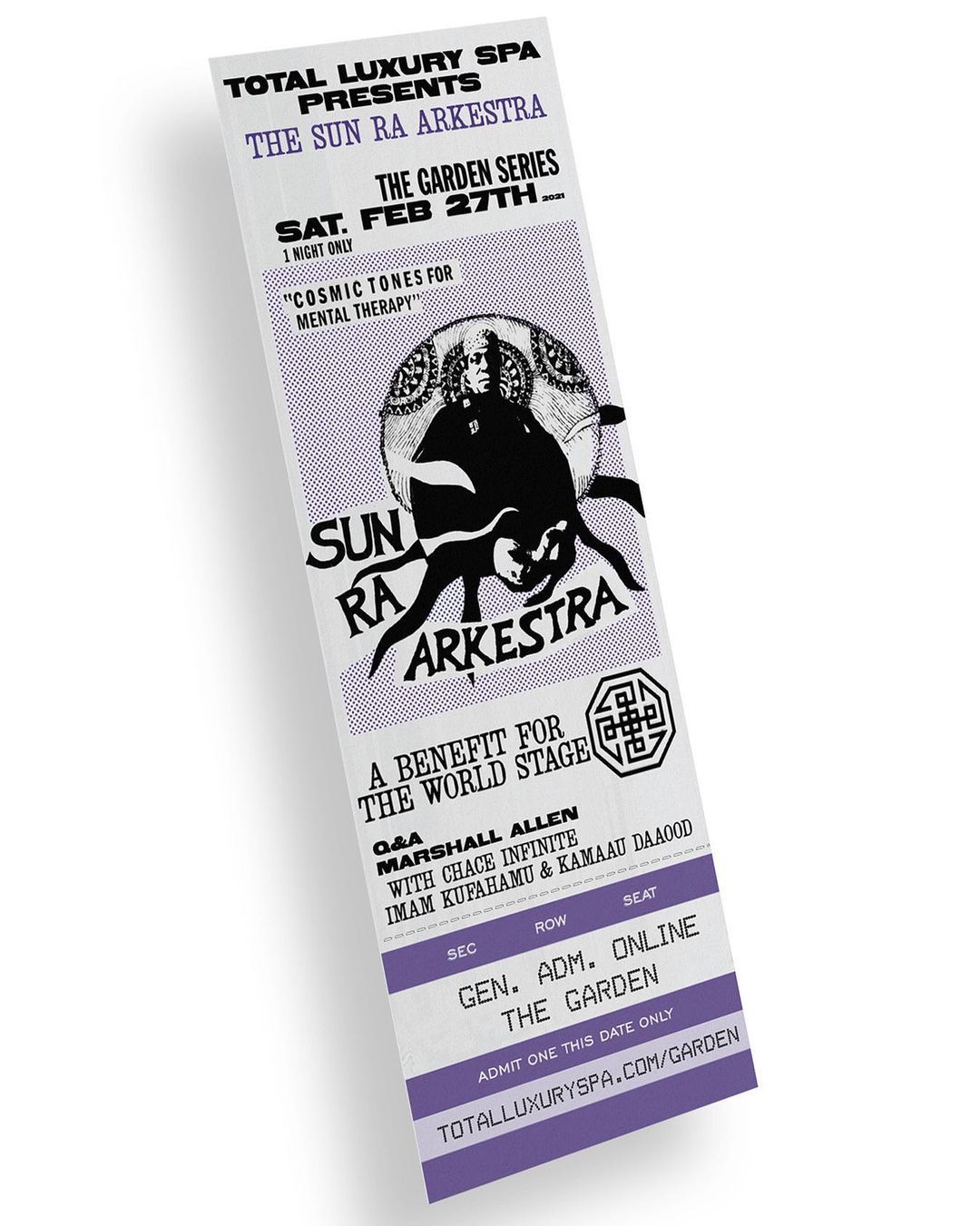
Total Luxury Spa x Sun Ra Arkestra online concert benefit for The World Stage, 2021
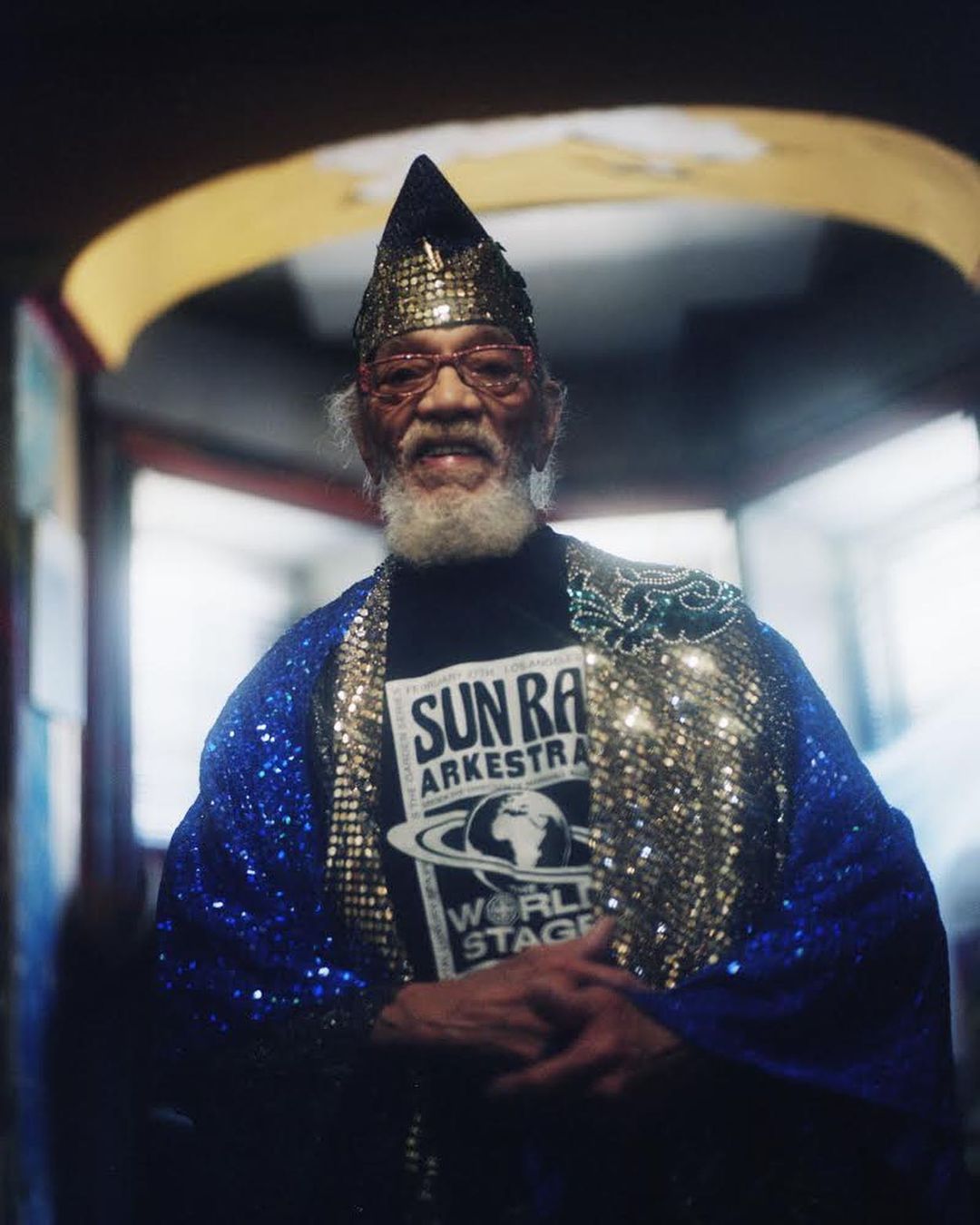
Marshall Allen of Sun Ra Arkestra in Total Luxury Spa x The World Stage t-shirt, 2021
PP: I’m interested in the words that you use to describe Total Luxury Spa: “hope,” “empathy,” and “community.” These require trust. You also work with a lot of community-based organizations, which I imagine requires trust, too. Could you talk about how trust factors into the work you do?
DD: I’m glad that you used the word “trust” because that’s something I bring up in the studio a lot. You don’t have anything without trust. Say we’re working on a commercial project or with a museum. The initial conversation—even in this conversation that we’re having—has to have an element of trust. We have to understand each other.
Especially with the artists and the community organizations that we work with, we aren’t like, “we want to license your name to do a shirt.” There’s nothing wrong with that but we want the relationship first. So, a lot of these collaborations are with friends. Even with the Cyprien [Gaillard] piece, for instance—I met him through Kahlil Joseph. We were hanging out in Berlin, just rapping out. He came to my studio in LA and met a bunch of the kids in the neighborhood. He went skating with them across the street. It just felt natural. He had an opening at Sprüth Magers and the film was about the lapse of time and we spoke at length about it. At one point, one of us said it would be cool to do a shirt around the show.
You also mentioned community organizations. We have worked with those in the same capacity that we work with an artist. There’s Lopez Flowers, a flower shop down the street from the studio. In our shop, we have a section with a vase for flowers. From day one of opening, we get flowers from them every week and put them in the vase. We got to know them, their family story, history, and how long they’ve been there; they were telling us about living and working there during the LA riots. We thought it’d be fun to do a project with them and share that family history.
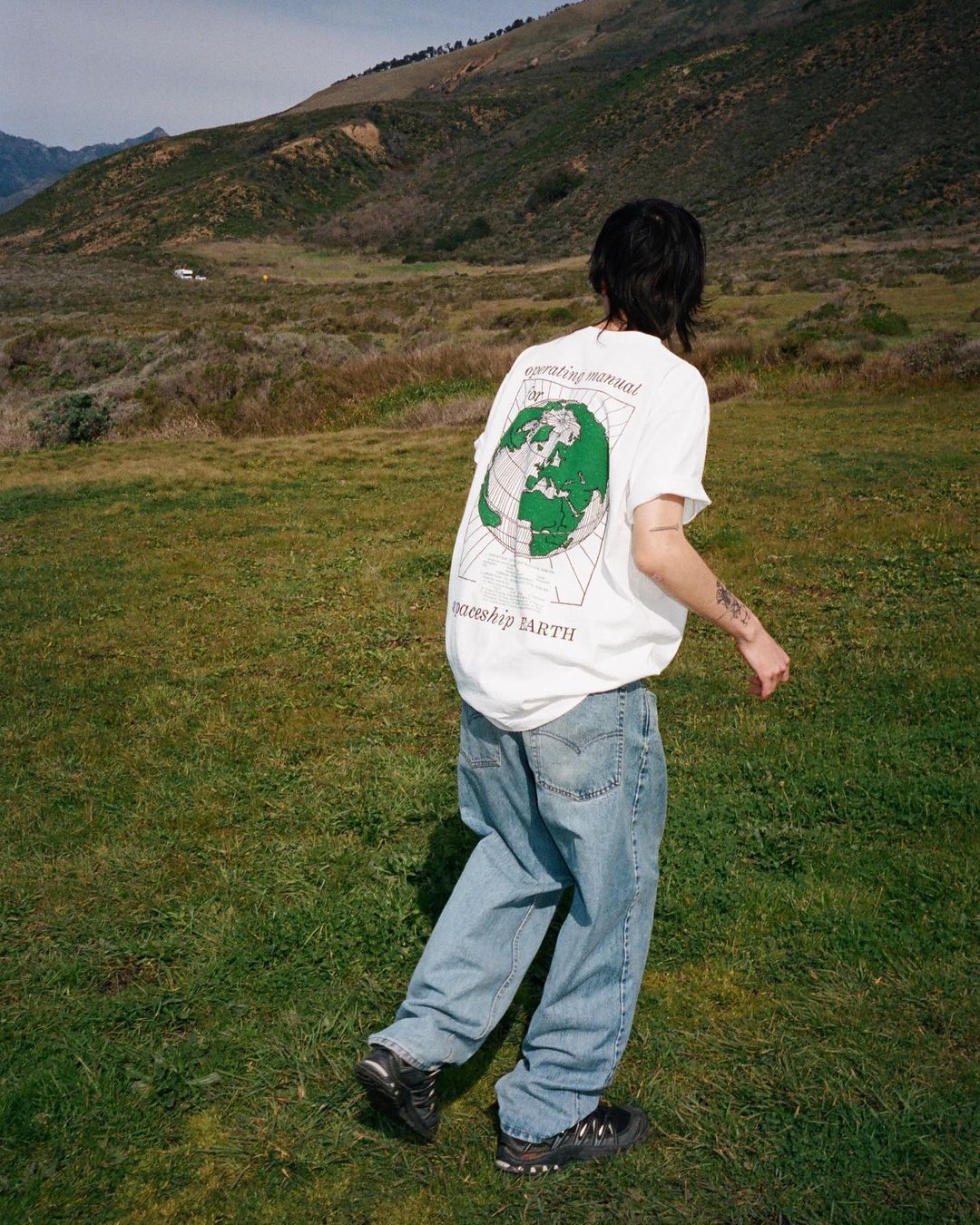
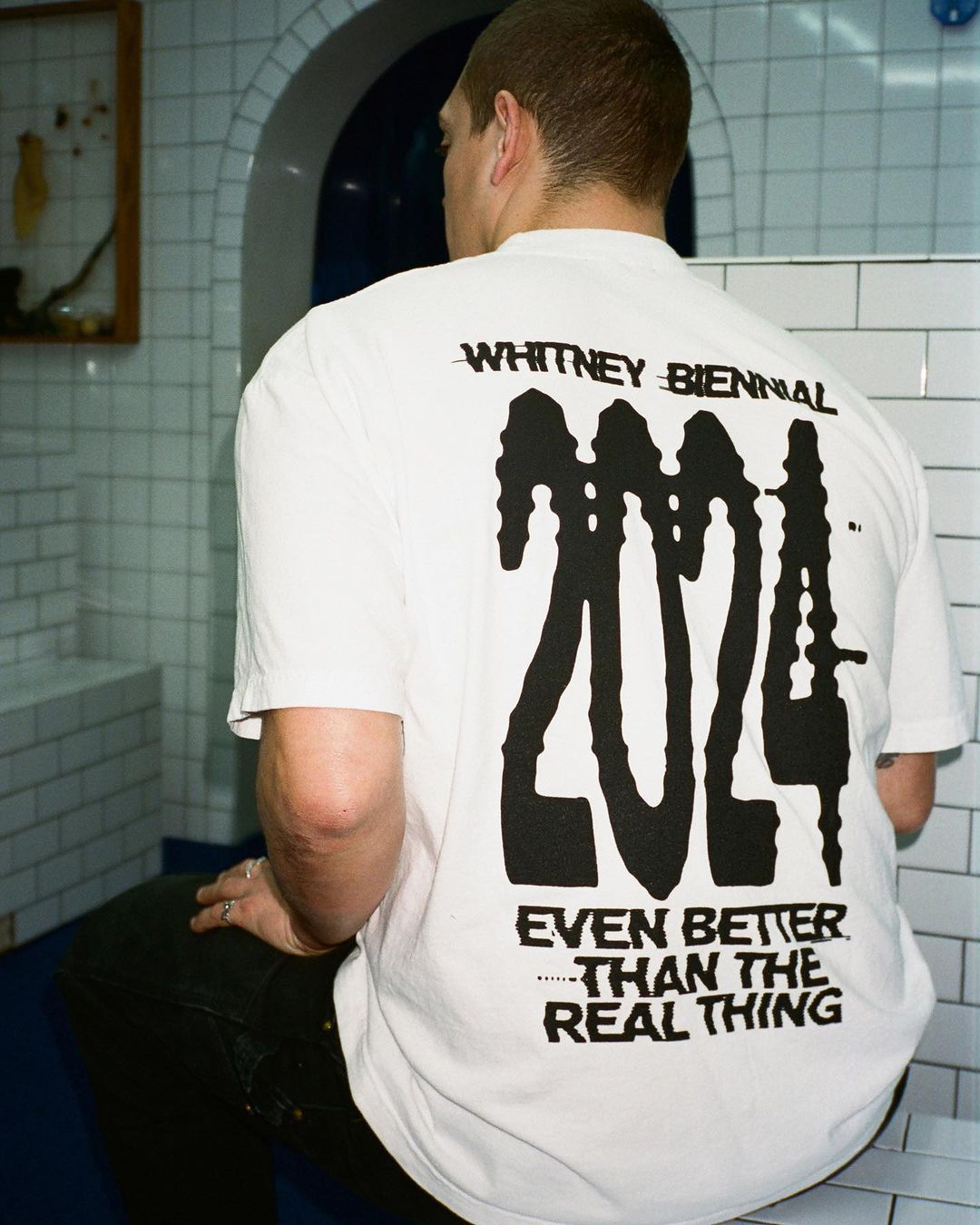
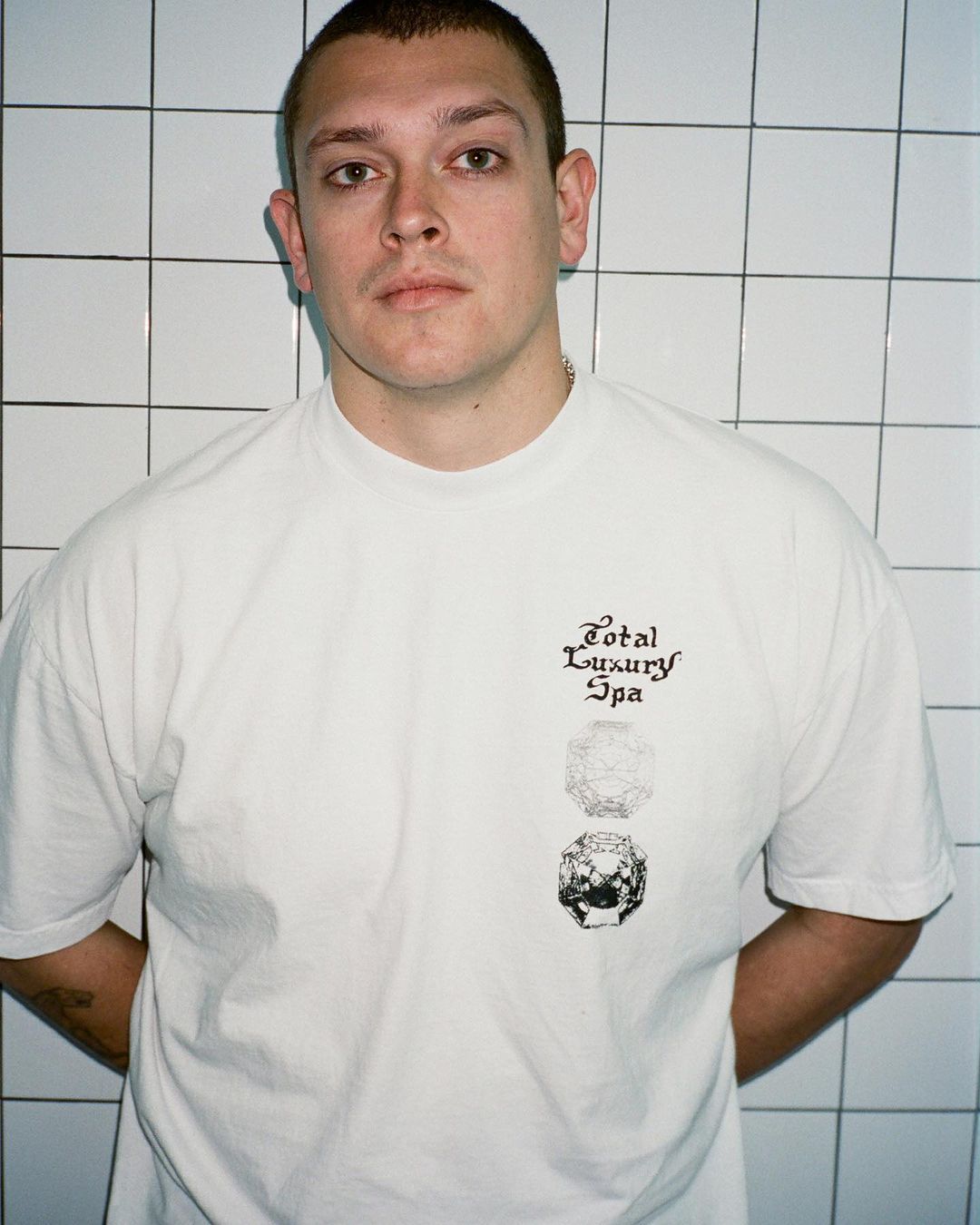
LEFT: Total Luxury Spa "Nine Chains" Gucci Vault t-shirt, 2022
CENTRE & RIGHT: Whitney Biennial x Total Luxury Spa "Even Better Than The Real Thing," 2024
PP: Elsewhere, you’ve said that Total Luxury Spa emerged out of a desire to do something less commercial than Commonwealth Projects. But there’s also this paradox with community-based work where, on the one hand, it’s seen as being averse to commercialization, but, on the other, you could potentially be redistributing more money if you do commercialize.
DD: You’re absolutely right. If we always think about our projects in terms of whether they can feed community initiatives, it can become paralyzing and problematic . I should say, we’re not a non-for-profit. Donating money or getting involved in community-based work is a byproduct of the caring and sharing. We work with artists because we enjoy the work that they do. So, the whole mechanism that is TLS can become inflated commercially if the only objective is, “Can this thing feed X?”
In some ways, it's like a snake eating its tail. I think we’ve always tried to keep things fairly small or intimate for that reason. I don’t think that’s a foolproof plan. Now we’re in five or six wholesale accounts around the world. We’ve tried to scale up, but it doesn’t really make sense for us.
There are other projects, such as the World Stage project, which is an amazing jazz venue in Leimert Park. They were struggling to pay rent, and so we came up with the Sun Ra project. It was during the pandemic and people couldn’t leave and we thought, “What if people got a physical ticket in the mail, we streamed it live online and we raised money to help them?” When they needed more money we went to some big brands we know and told them their story and how they should help.
I don’t think that’s at the core of everything we do, but I also believe that every brand should be donating to important causes. Capitalism is in everything, so a world in which we ignore that is wild to me. There are often times where I’ll hear about a project and it’s out of our capacity to help, but I do know a brand that might actually be able to—and I’ll put them in touch with that brand.
PP: Early on, there was often some live event or performance tethered to the zines you made. And you’re still making shirts that are tied to some phenomenon, such as the Cauleen Smith shirt for her 52 Walker exhibition earlier this year. Why have in-person events tied to the products you make?
DD: I don’t think it’s necessary. But it feels natural for me to get people together, whether it’s a barbecue or a special event. I was on the board of the Underground Museum for a long time and so much of what that space represented was the gathering of people in a safe space. The early collaborations that we did with Martine Syms, and the film series that we did with a bunch of artists, including Aaron Brown, were all event based. And when I look back at some of the early stuff we did with Total Luxury Spa—for instance, the free, public meditations with food every Wednesday morning in the office at 8am—it was a real hybrid of colleagues, friends, kids from the neighborhood, and their families.
I think that we’re going to start doing more event-based happenings in the space. We might move the office next door and use the space as a real programming space that has everything from yoga or meditation to an artist talk when one of our friends is in town. We were doing that at the Underground Museum for a long time, and because that closed, it’d be cool to bring some of that back again.
PP: Your background is in film and experimental video. Can you tell me a bit about that?
DD: I was working with Doug Aitken while studying at CalArts. I traveled with him a bunch, eventually started producing for him, and then I was running his studio. I got to experience the making of film and narrative, however fragmented it was. After leaving Doug’s studio, I produced for a little while. In the early days of Commonwealth [Projects], I went strictly into producing for film-based artists, which allowed me to understand their modes of narrative and how that was shown and shared through an exhibition.
PP: Does that narrative approach still structure the way that you work?
DD: It’s funny, I just had a conversation recently with someone. We were bouncing ideas around and they said to me, “All your ideas are concept first.” I hadn’t thought about that before. I think about some of the shirts that we’ve done and how they have a narrative arc. Even with Total Luxury Spa being a hypothetical wellness space, for instance. I’ve always been fascinated with the archive of the 1960s and 70s, and these larger utopian ideas about the future. Some of there were “what ifs?” and love stories about a perfect future. Now that we’re living in that future, we use some of those tropes or graphic frameworks but to tell a more contemporary story.
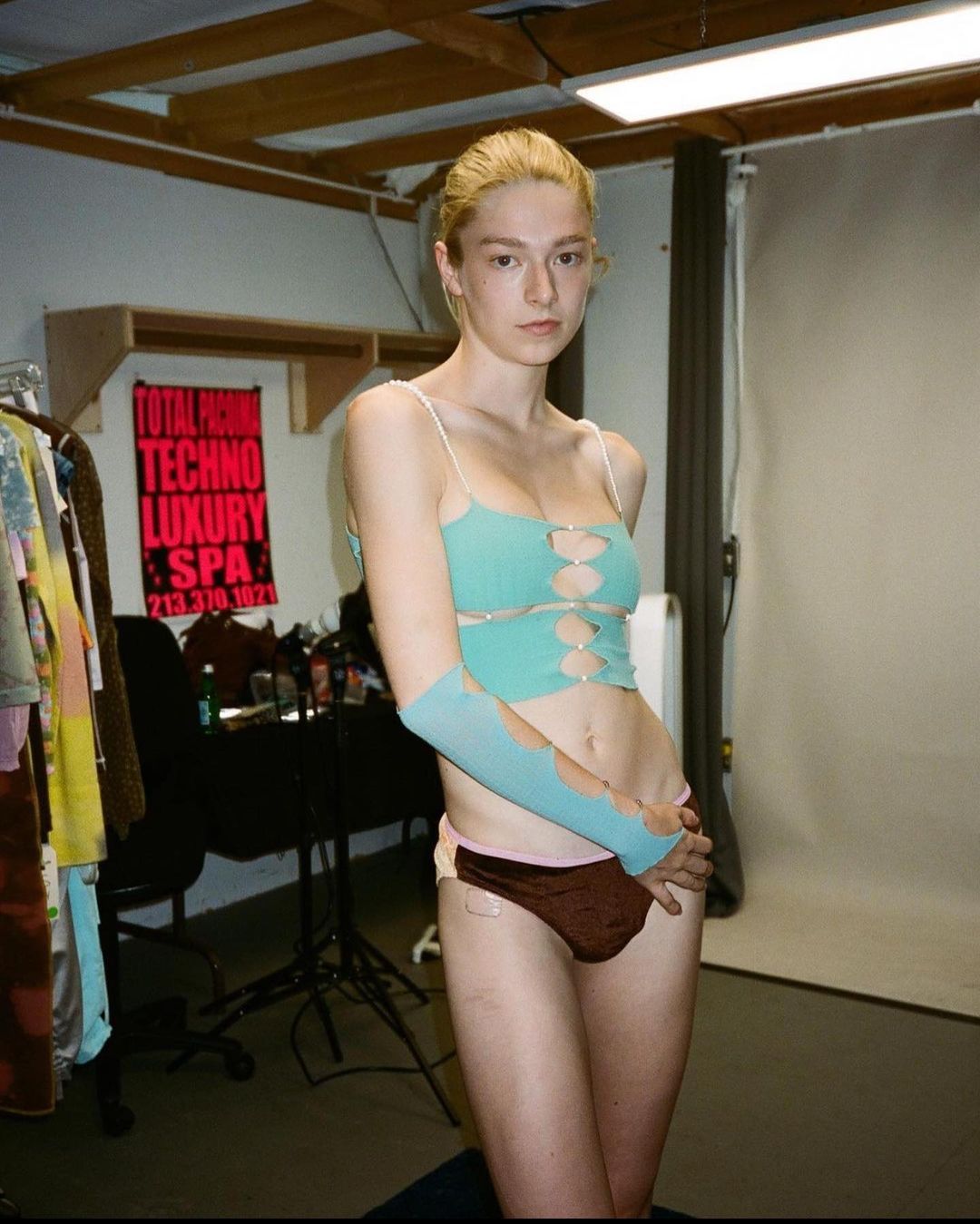
Hunter Schafer with Pacoima Techno x Total Luxury Spa poster, 2021
PP: Speaking of design, how does the process differ based on who you’re working with? Lauren Halsey, for instance, often uses text in her practice, so there’s already this rich archive of typography and graphic design-bent visual language to work with—but, then, some artists you work with are less text-based.
DD: Whether I’m working on an exhibition or a Total Luxury Spa shirt, we just sit down with the artist first. We have fun, hang out in the studio, and shoot the shit. Maybe they have a show coming up, so we try to understand what the show is about. What are they interested in? Or, if there’s an arc to that show, what’s another element that would be a byproduct of that narrative?
Often times, with text-based artists, we will try to bring a bit of a graphic design flex to things—even if it means doing something that feels non-designed. I wouldn’t say it’s easier working text-based artists. With Lauren Halsey, she told us to go to her show, shoot a bunch of photos, and see what we connected with. Then, we started looking at the photos, and we were like, maybe we take the L from this, we take this and we take this, and bring it all together. We sent it to her, and she came back like, “What if it said this?” There was a real bouncing back and forth. I think none of this ever happens at a distance with all of our projects. It’s so connected to the source—to the person making it.
Credits
- Text: PHILLIP PYLE
Related Content
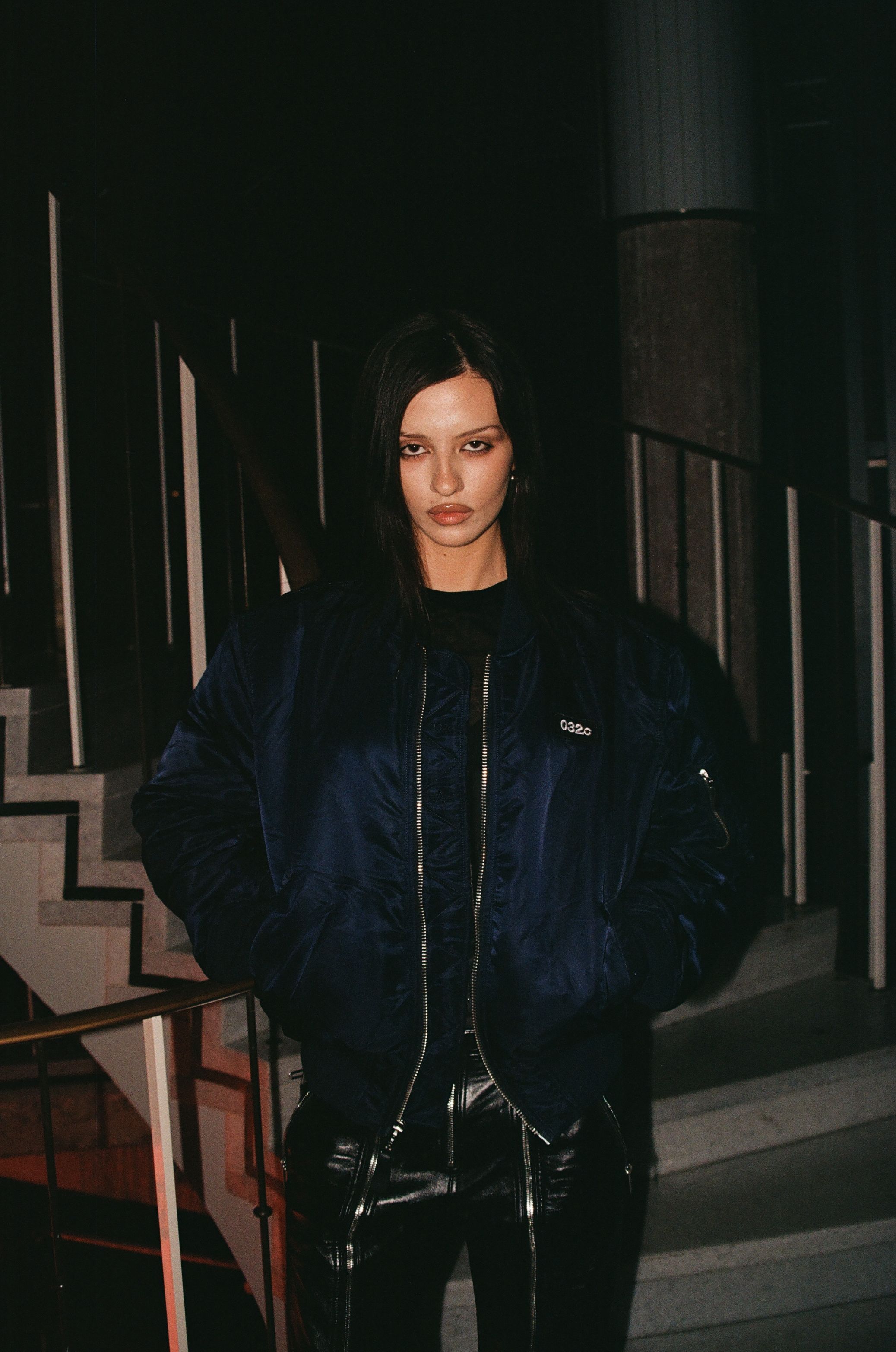
Alpha Industries x 032c NIGHTHAWKS Capsule Collection
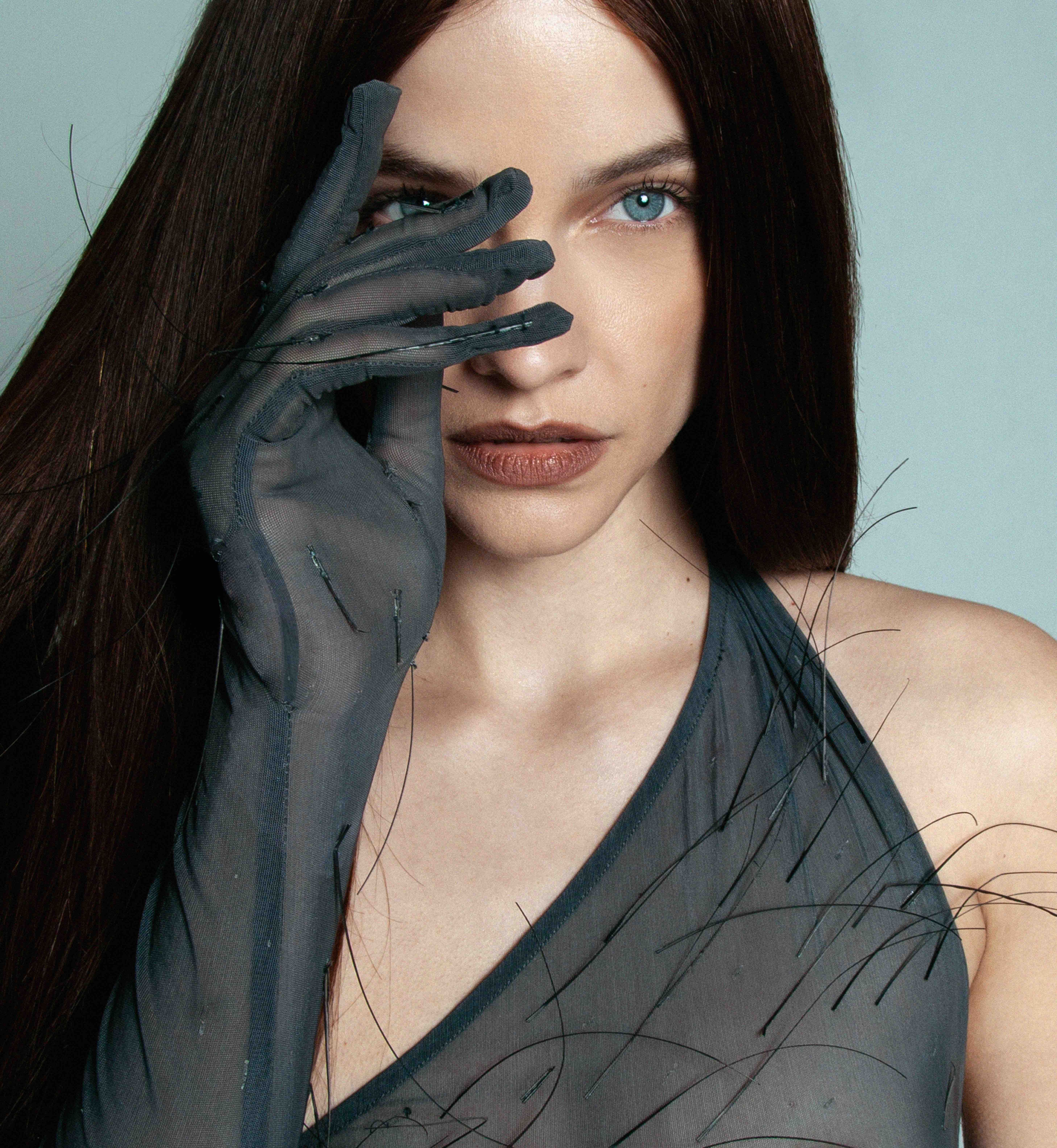
A Matter of Safety: Barbara Palvin
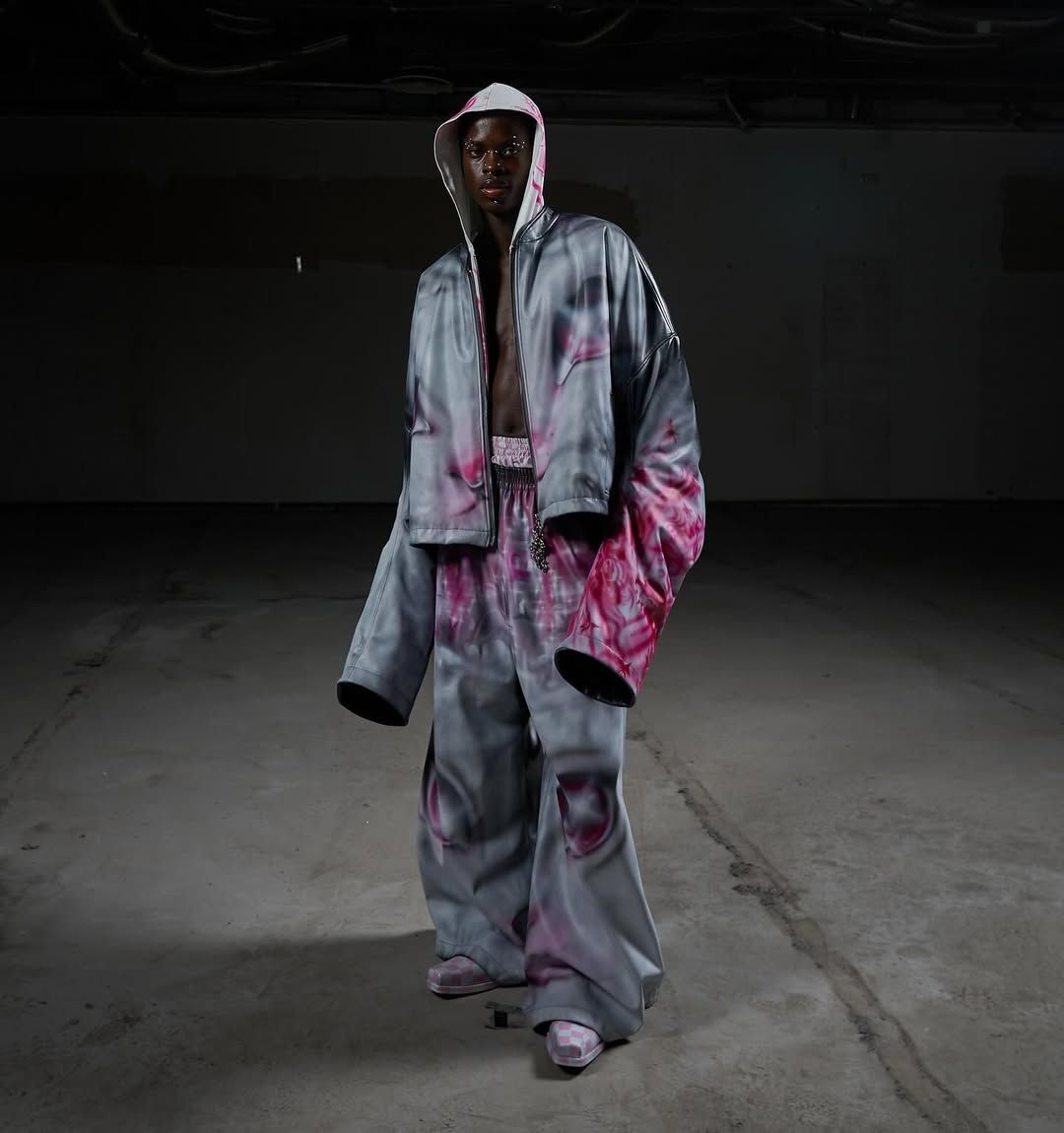
Made in Heaven: Gerrit Jacob
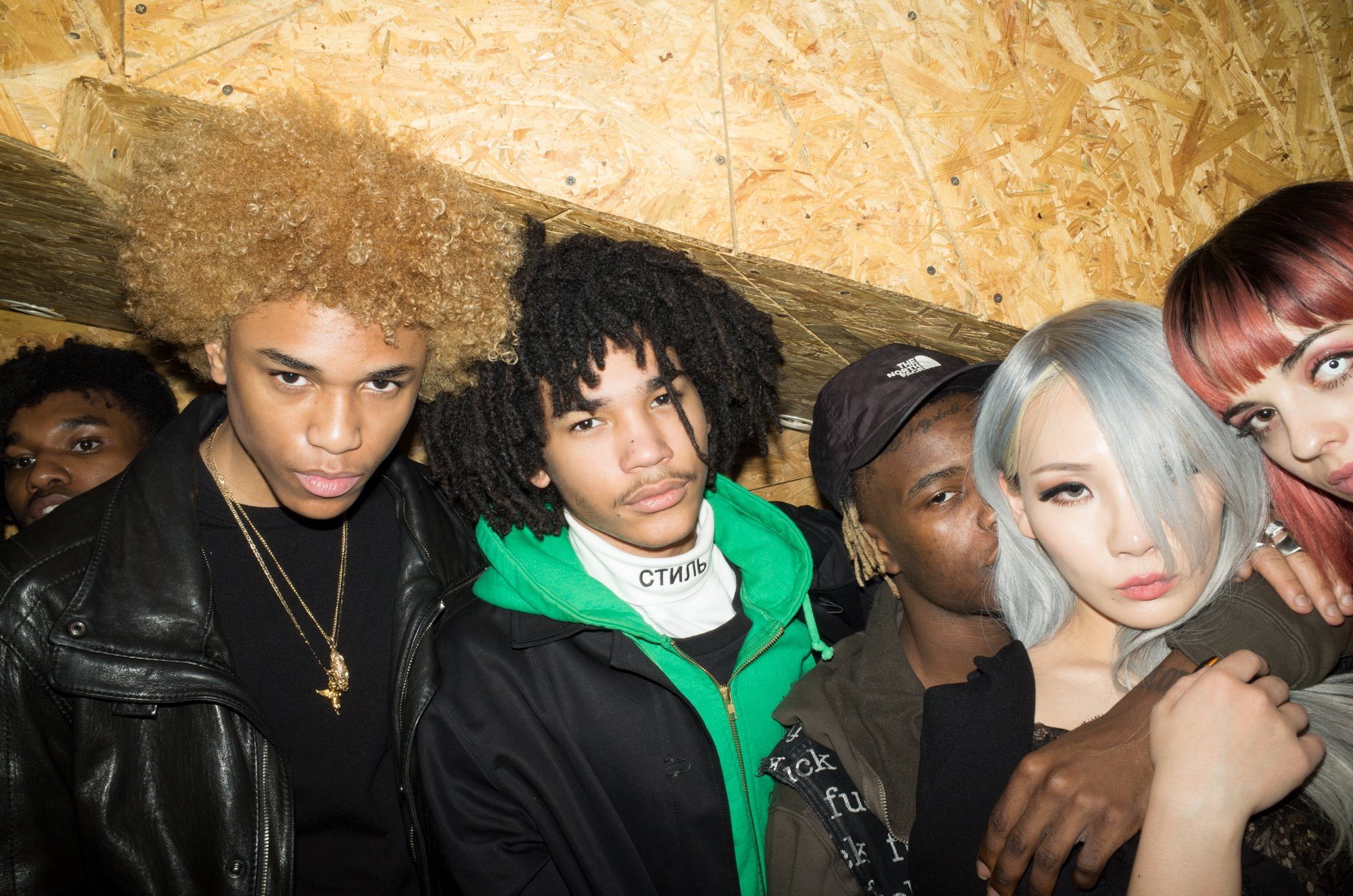
ALYX x 032c Paris Fashion Week Party at Silencio
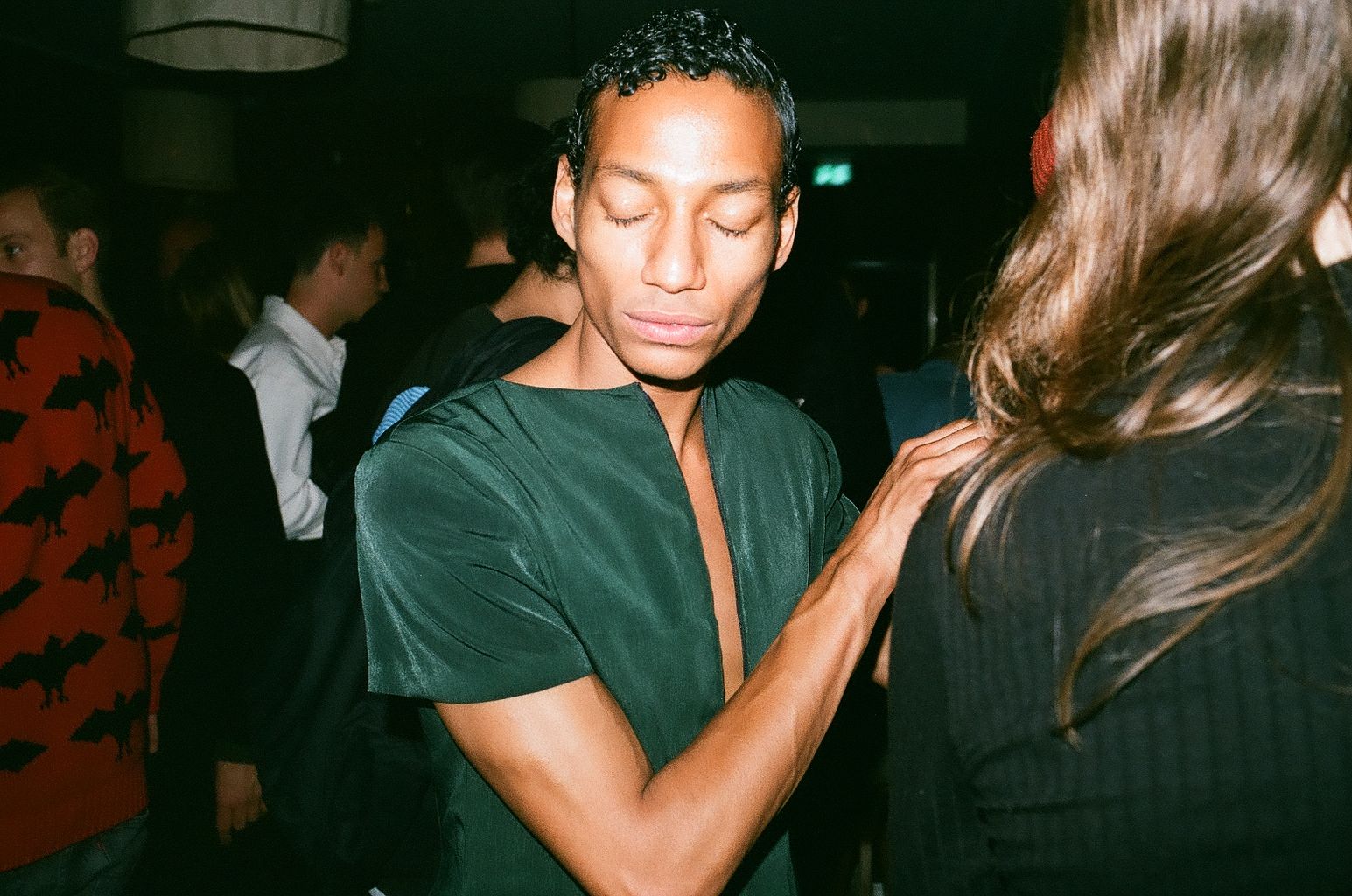
BLING BLING BRUTALISM: 032c Crystal Collection Launch Reception
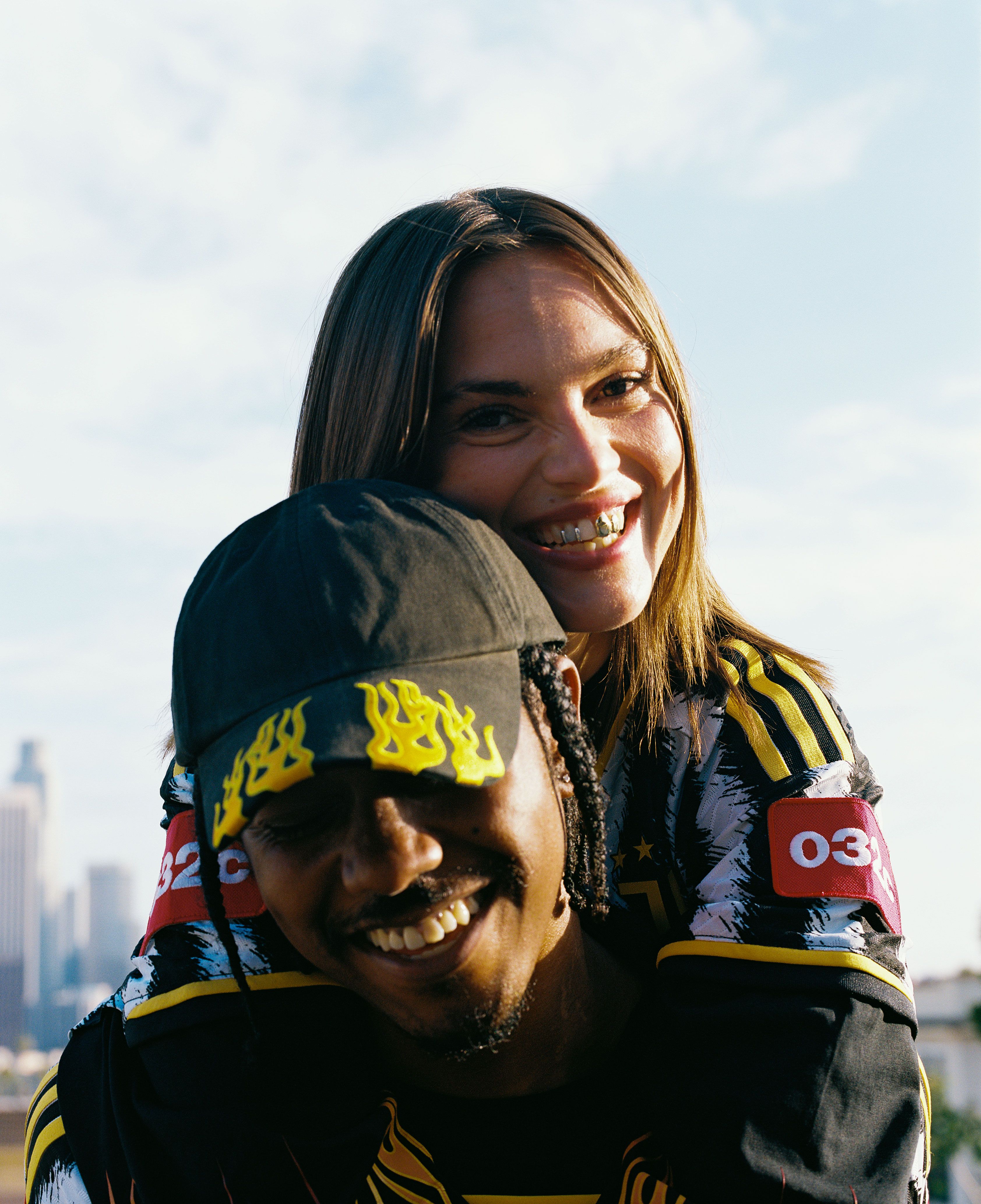
Juventus FC x 032c
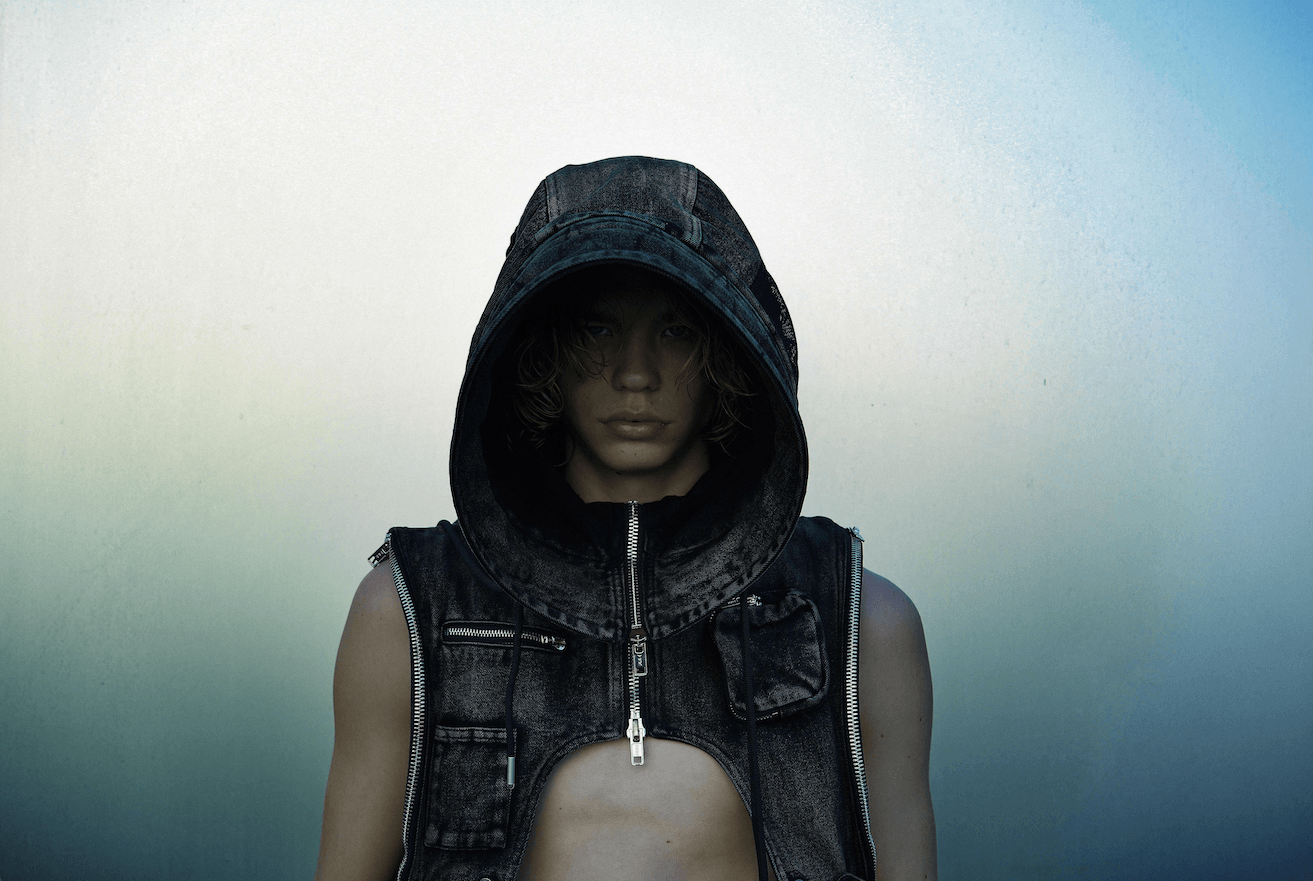
German Denim Dreams: LUIS DOBBELGARTEN's No/Faith Studios
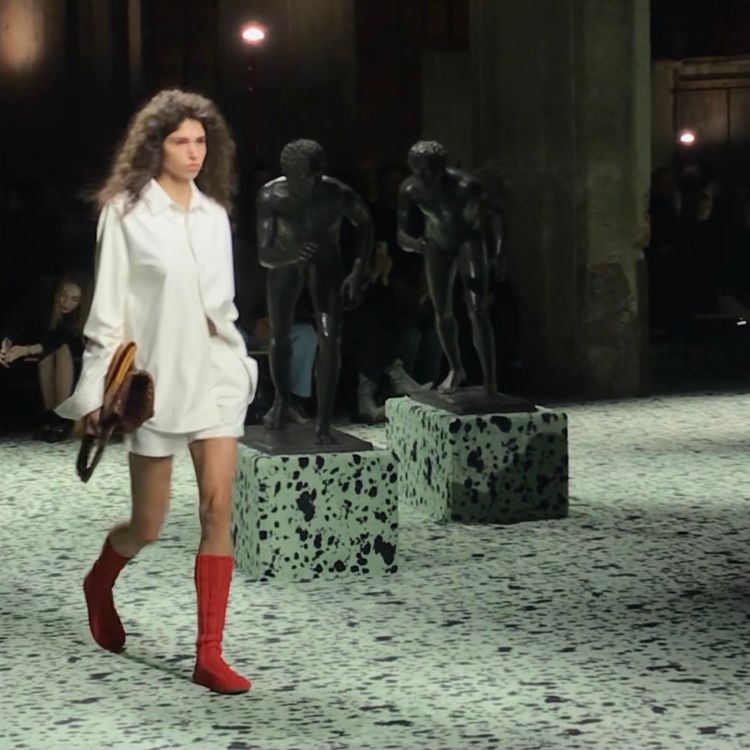
Transmissions: The Hero’s Journey
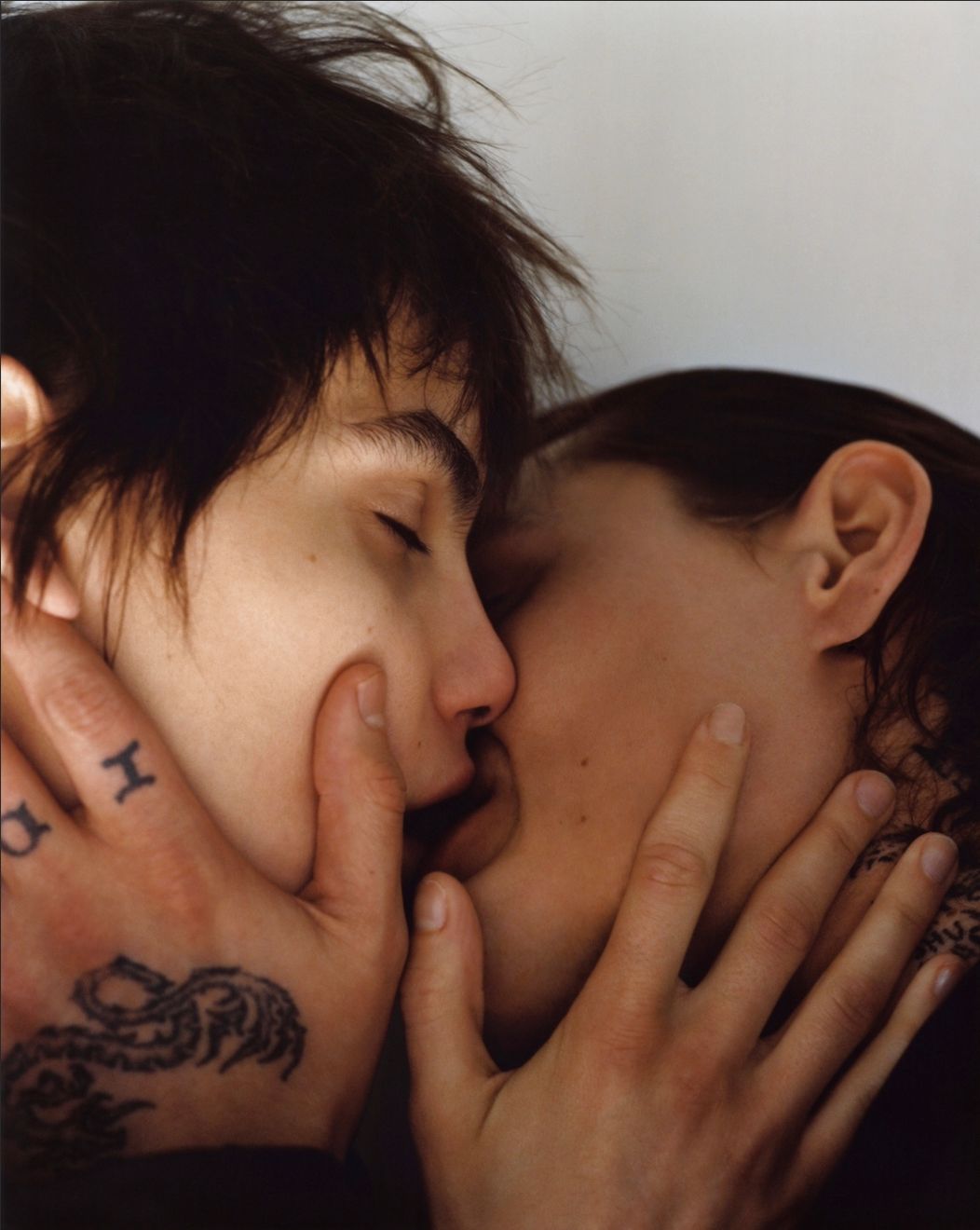
KISS
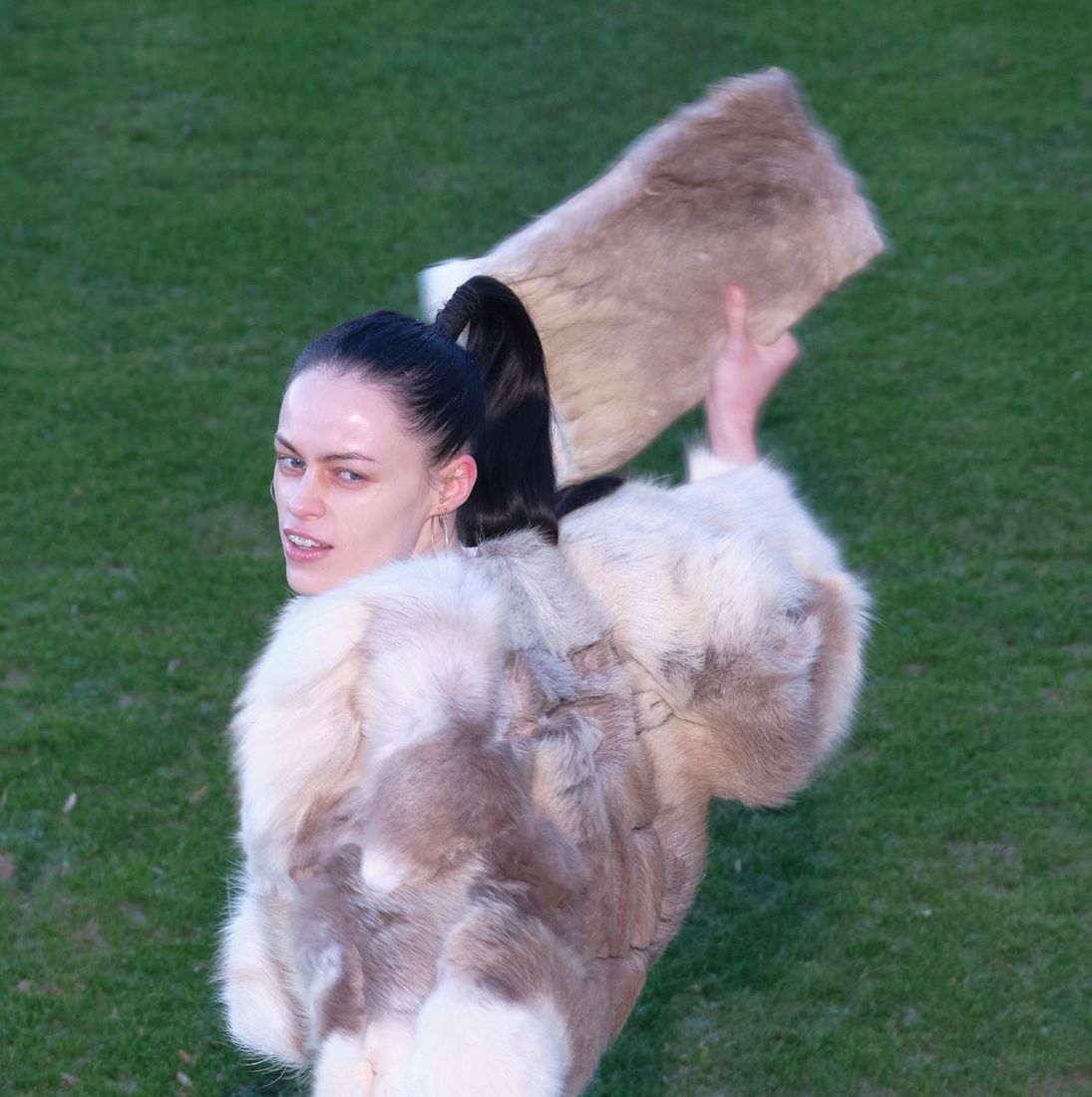
New Prototypes
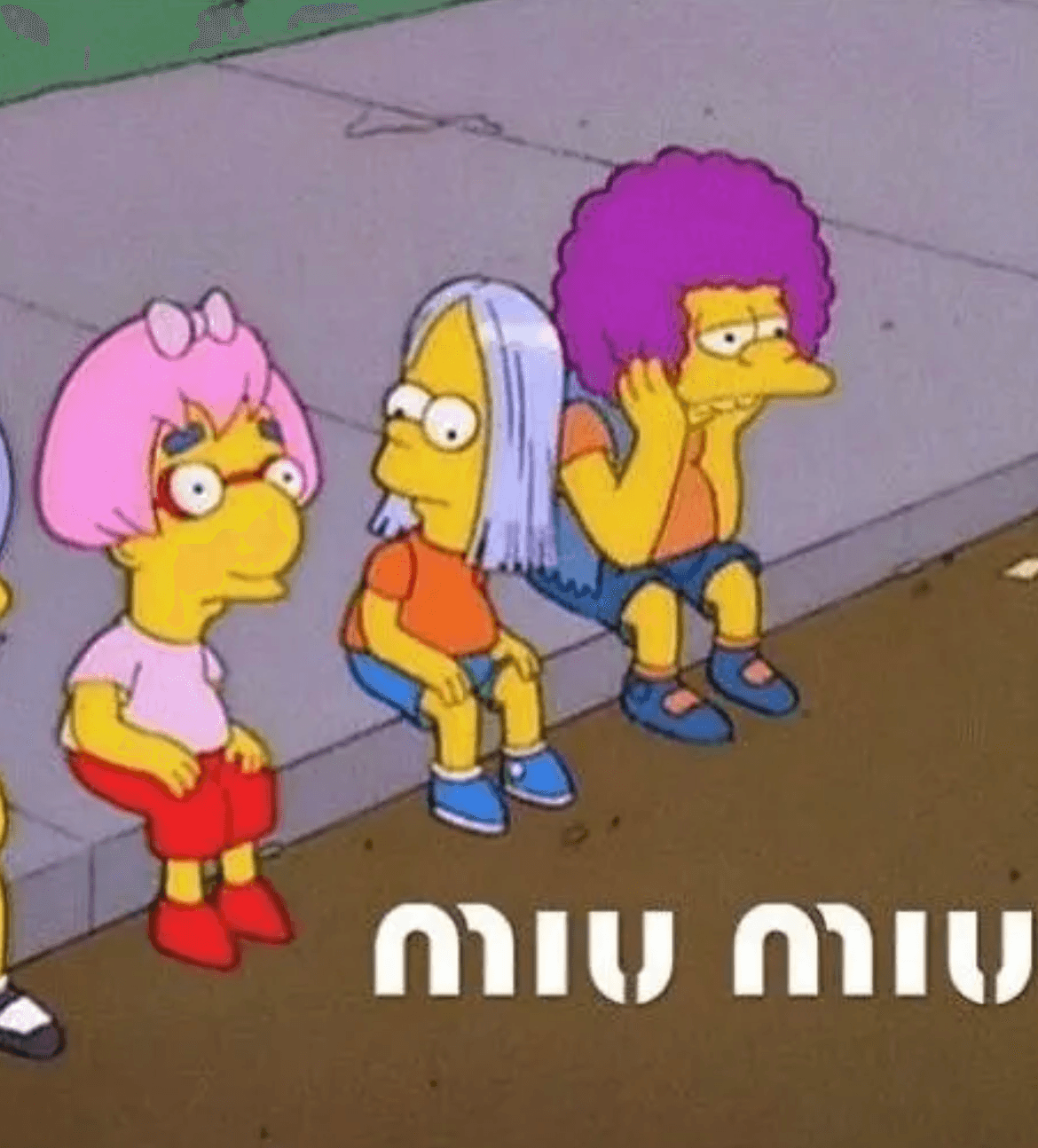
The Miu Miu Moment: Not a Girl. Not Yet a Woman
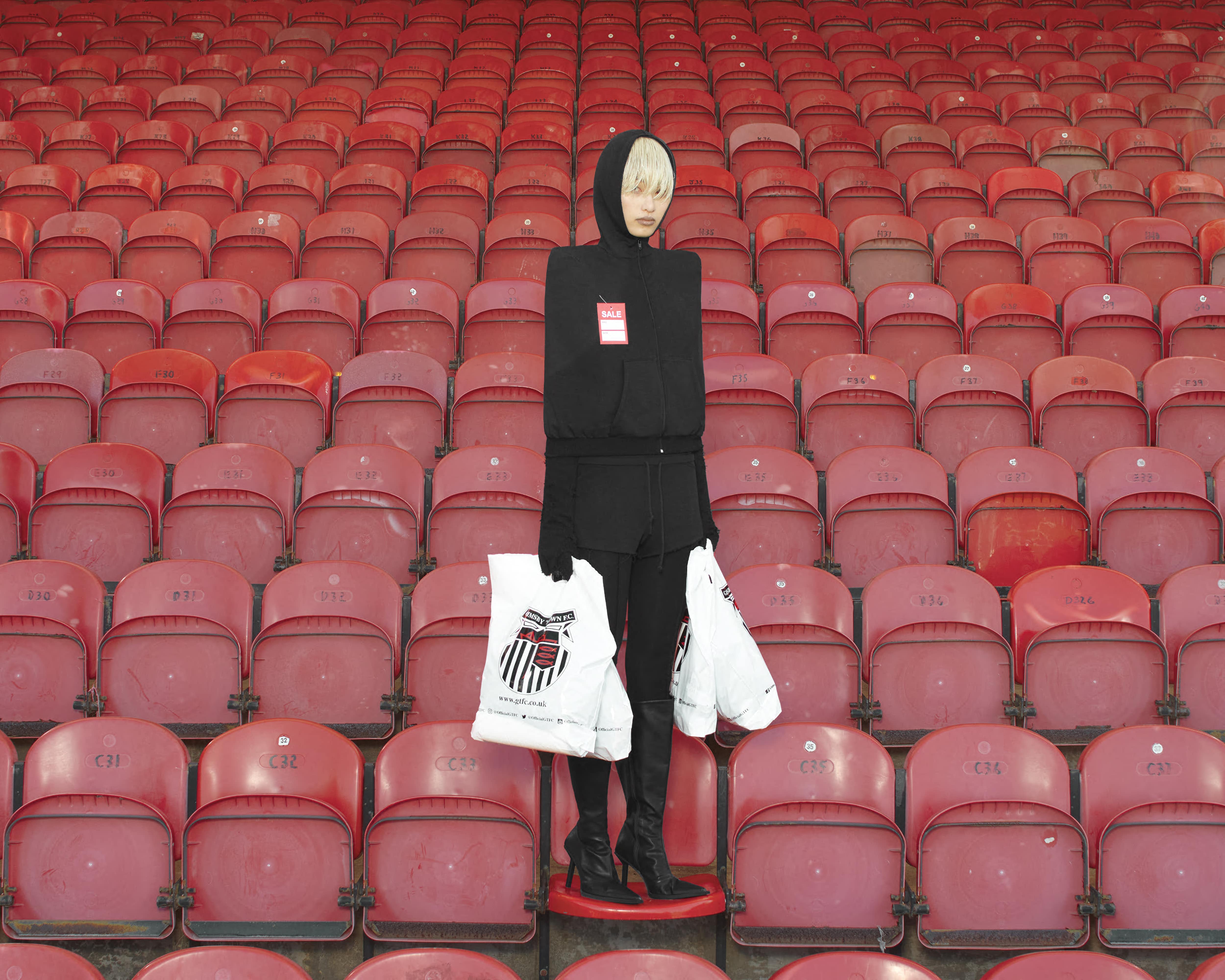
“Stay Commercial”: BETSY JOHNSON’s PRODUCTS